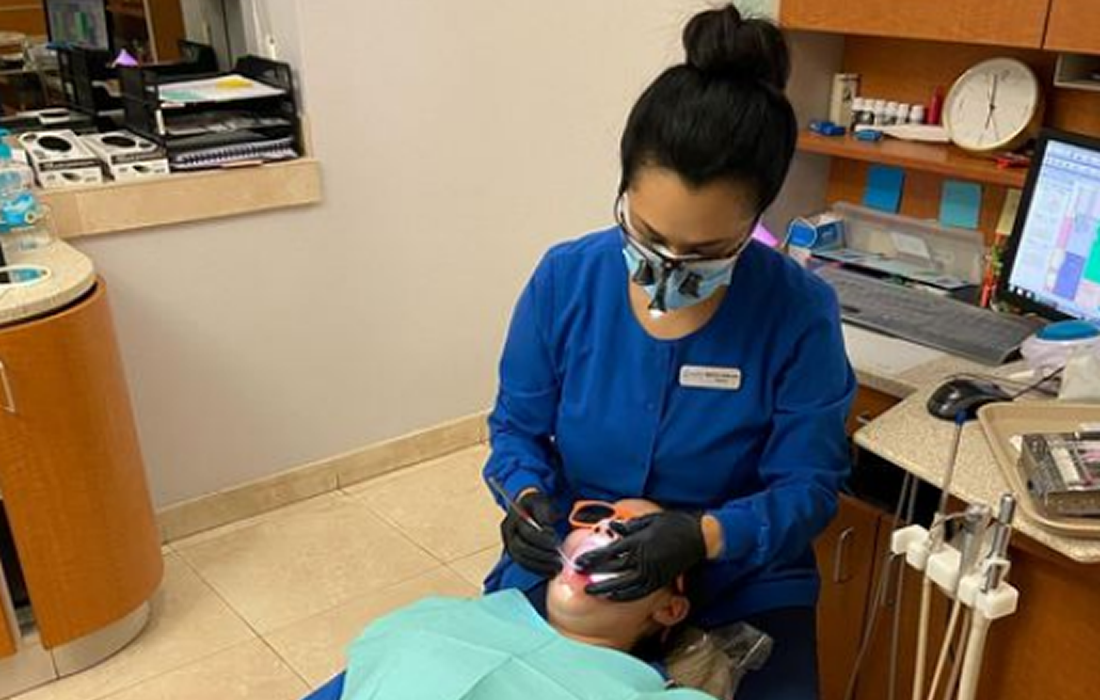Platelet-Rich Plasma
The Use of Platelet-rich Plasma in Dentistry
The use of platelet-rich plasma (PRP) extends to more than just the general medical field. In dentistry is also an emerging field of medicine involving stem cell technology, tissue engineering, and dental science.
PRP is prepared from autologous plasma with concentrated platelets, because they contain more than 300 biologically active molecules that are released upon activation from their alpha and dense granules and subsequently regulate the tissue regeneration process.
The most important growth factors released by platelets include vascular endothelial growth factor (VEGF), transforming growth factor-β (TGF-β), platelet-derived growth factor (PDGF), fibroblast growth factor (FGF), epidermal growth factor (EGF), hepatocyte growth factor (HGF), insulin-like growth factors 1 and 2 (IGF-1 and IGF-2).
These molecules have many important roles in bone remodeling, wound healing, hair regrowth, nerve regeneration, aging, and others.
Some examples of current applications in dentistry include:
PRP in Endodontic healing
Its use aims to regenerate damaged/necrotic pulp-dentin complex tissues such as dentin, pulp tissue, and root structures, in order to restore pulp functions.
PRP has been widely used in several branches of dentistry due to its ability to release a rich source of healing-promoting growth factors that favour stem cell multiplication and differentiation.
PRP has recently emerged as a possible tool for supporting cell growth and differentiation of vital tissues in the canal after disinfection, thereby enhancing endodontic regeneration.
A study by Sachdeva et al. reported a case of a 16 years old male patient who had an incompletely developed root with an open apex in his discolored, non-vital maxillary left lateral incisor. Autologous PRP was injected into the canal space and after three years a follow-up radiography revealed the recovery of the periapical lesion, increased thickening of the root walls, further root development, and continued apical closure of the root apex.
Another study by Alagl et al. found that PRP can serve as a successful scaffold for regenerative endodontic treatment.
PRP in Periodontal Regeneration Procedures
Regeneration of tooth-supporting structures destroyed by periodontitis is a major goal of periodontal therapy. Periodontal regenerative surgery aims to regenerate alveolar bone, cementum and functional periodontal ligament.
A study by Bhradwaj et al. reported that the addition of PRP to bone graft appeared to be beneficial in the treatment of human periodontal intrabony defects. In another case report, the authors treated intrabony defects by adding PRP to a bone allograft in guided tissue regeneration and observed significant improvements in clinical insertion and bone filling.
PRP in Oral and Maxillofacial Surgery
The use of PRP is opening new avenues in the field of tissue repair and regeneration in oral surgery.
A number of studies have shown that PRP gel can significantly reduce postoperative pain and discomfort after tooth avulsion, and can avoid the development of osteitis.
A study by Alissa et al. evaluated the effect of PRP on the healing of extraction sockets. The findings of their studies suggested that postoperative pain was significantly reduced with clinically appreciable soft tissue healing in patients treated with PRP, compared with the control group.
In another study by Ogundipe et al., researchers evaluated the use of PRP in patients who had undergone third molar extraction, and found that the treatment led to pain reduction, as well as improvement in swelling and mouth opening.
Ruktowski et al. showed that there was a significant increase in radiographic density over the baseline level after tooth extraction. When used as part of a simple and safe therapeutic approach, PRP shows promise in numerous studies in oral and maxillofacial surgery.
PRP in Implant Dentistry
Several animal and human studies have assessed the effect of PRP in implantology. Many of these studies have reported the beneficial effects of PRP on hard and soft tissue healing.
Song et al. transferred autologous PRP into the canine implant bed to study the effect of PRP on nerve innervation in the peri-implant bone. They demonstrated that PRP exhibited a significant effect on the diameter of the myelinated nerve fibers and might help to improve regeneration of nerve fibers in peri-implant bone, more specifically 6 months after healing.
Taschieri et al. reported that the use of PRP in association with implants immediately placed into fresh extraction sockets proved beneficial effects on soft tissue healing in the clinical studies of post-extraction implants.
Conclusions
The major therapeutic benefit of regenerative medicine treatments come from the paracrine action of trophic factors at significant concentrations which, among many actions, stimulate endogenous progenitor cells to promote proliferation and healing.
The use of PRP has been successfully used in various clinical dental applications. However, larger studies are needed to further explore the clinical advantages and to establish the therapeutic efficacy of PRP in regenerative dentistry.
Source:
Xu J, Gou L, Zhang P, Li H, Qiu S. Platelet-rich plasma and regenerative dentistry. Aust Dent J. 2020;65(2):131-142. doi:10.1111/adj.12754
Image from:
Photo by: Adriana Hernandez

